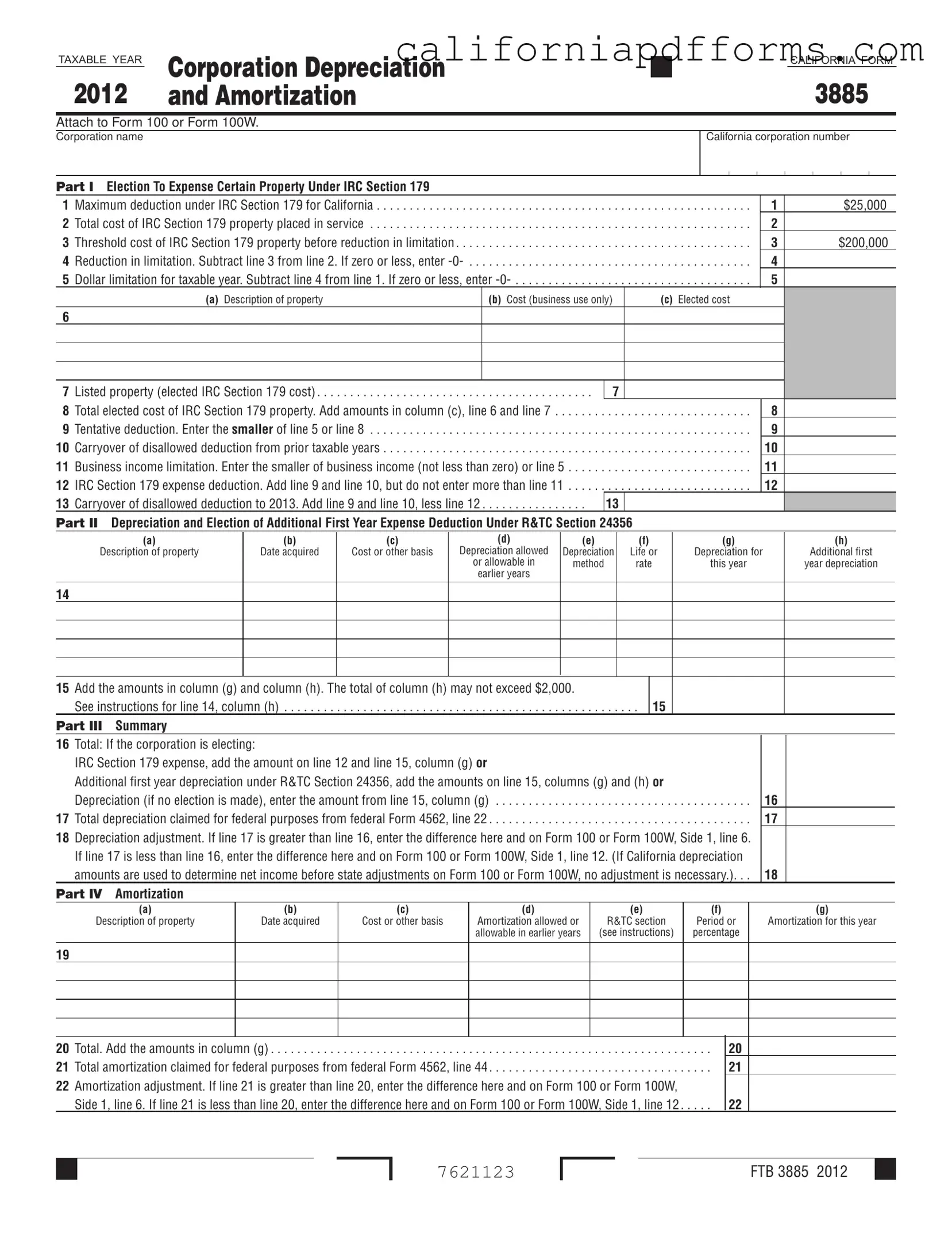The California 3885 form is used by corporations to calculate depreciation and amortization deductions for state tax purposes. This form is essential for corporations, partnerships, and limited liability companies classified as corporations. It helps in determining how much of the cost of property can be deducted over time, reflecting the wear and tear of business assets.
Any corporation operating in California that has depreciable property or intangible assets must file the California 3885 form. This includes standard corporations, S corporations, partnerships, and LLCs that are taxed as corporations. If your business has purchased property that qualifies for depreciation or amortization, you will need to complete this form.
The form covers two main types of property: tangible and intangible. Tangible property includes physical assets like machinery, equipment, and vehicles. Intangible assets may include things like patents or trademarks. Specific rules apply to each type, so it’s important to understand what qualifies under California law.
What are the key differences between California and federal depreciation rules?
There are several important differences between California and federal depreciation rules. For instance, California has a lower maximum deduction limit under IRC Section 179, set at $25,000, compared to federal limits. Additionally, certain types of property may not qualify for deductions in California even if they do federally. It’s crucial to review these differences carefully to ensure compliance and maximize deductions.
How do I calculate the depreciation for my assets?
To calculate depreciation, you will typically use one of several methods: straight-line, declining balance, or sum-of-the-years-digits. Each method has its own formula and is suitable for different types of assets. The straight-line method spreads the cost evenly over the asset's useful life, while the declining balance method allows for larger deductions in the earlier years. You will need to choose the method that best fits your asset type and business needs.
Yes, you can amend your California 3885 form if you discover errors or omissions after filing. To do this, you will need to submit an amended return along with the corrected form. Keep in mind that amendments may affect your overall tax liability, so it’s advisable to consult with a tax professional to ensure that all changes are properly documented and submitted.
